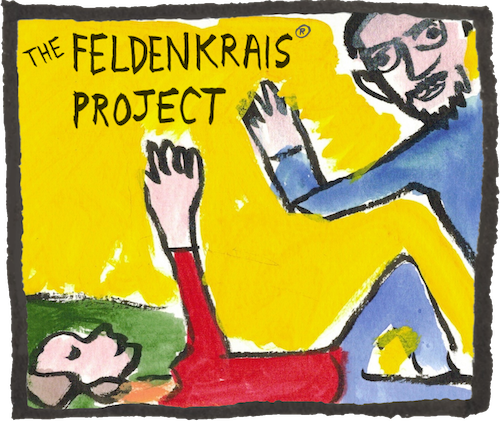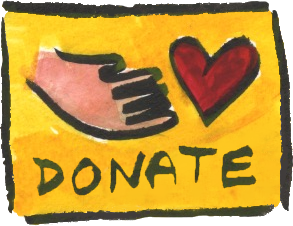Disclaimer: The Feldenkrais Method of somatic education is presented on this website for educational purposes and self-guided study only. The Method and all recordings, live online classes, pages, blog posts, and documents of any kind available from this website are not intended to be a substitute for professional help or medical treatment. Nothing on this website is intended to diagnose or treat any pathology, disease or injury of any kind. This website, all media files found on it, all live classes available through it, The Feldenkrais Project, Twin Cities Feldenkrais, LLC, and the creator of any and all of these files, and anyone featured on these files, cannot be held responsible for any injuries or discomfort that might arise while doing these lessons. If you have any doubts about whether doing Feldenkrais lessons is appropriate for you, be sure to consult your medical practitioner.
The following are service marks or certification marks of the Feldenkrais Guild of North America: Feldenkrais®, Feldenkrais Method®, Functional Integration®, Awareness Through Movement®, ATM®, FI®, Guild Certified Feldenkrais Teacher®, and Guild Certified Feldenkrais PractitionerCM.





This lesson is an alternate teaching of an older Feldenkrais Project lesson called Bending Sideways, from our Freeing the Spine, Chest, Shoulders, and Neck collection. I’m considering replacing the older one with this one, if listeners like it. I’d love your feedback about which version of this lesson you prefer!
Nick: In response to your comment above, I haven’t made my way to the Bending Sideways lesson but I really like this one. I clearly sensed the connection between my hip bones and cervical spine (which is arthritic) and found it easier to turn my neck more fully left and right after the lesson by using more of my spine and skeleton. This has great implications for merging left while driving a car. In fact, I’m practicing in my chair right now: “Shorten my left hip, push on my right heel, twist from my right hip, slide the rib basket and shoulder blades.” Thank you!
I don’t exactly remember all the parts of the other version, but i really liked the standing intro and ending of the lesson.
Great. The other one has a different version of the standing frame for the lying down lesson. If you try it sometime, let me know how you like it!
Hi Nick, I am delighted with this lesson and am enjoying bending sideways too. So both are good for me! I had been having trouble with side bending in the side lying position, my side ribs don’t like being called into action to support but they’re getting the idea now. I wonder if you have a lesson leading into side to side rolling which builds on these lessons? Thanks very much for your excellent project.
Glad to hear you’re enjoying the Feldenkrais Project! Members and Patrons can see Related Lessons, in the blue tabs above, which has lessons directly related to your question. Please consider joining the Project!
There’s also some nice inclusion of side-lying, limbs-calling-on-ribs, in Connecting Shoulders and Hips, Parts 1 & 2, in our Learning the Limbs, from the Center collection.
Thanks to your comment I’ve added these lessons to our to our Related Lessons tab. Your question has improved this study resource!
Nick, I haven’t done the Bending Sideways lesson, but will do that to compare and leave feedback. Some comments on this lesson: 1) I loved visualizing the bend initiated by one side of the spine, and moving from there. I’ve never thought of/experienced bending that way, and I think it added fluidity to my movement. 2) I had a lot of difficulty understanding the instructions while standing, both before and after the lesson. Still, it was a wonderful lesson, I did it to ease my back after a spell of gardening, and it sure brought relief and ease. Thank you, Nick.
I did both lessons in two days. I did bending sideways first and then this lesson.
I had done lessons similar to the Bending Sideways before but still found it challenging. I made many changes during this lesson and found it really made me aware of what I was doing in walking.
Later the same day I did about half of this , Spine Bending lesson. I finished it the next morning. When I began the second half of the lesson I began in standing and tested shifting my weight from one foot to the other. The movement had become really clear and without effort, either physically or in my thinking.
I really got great benefits from both and would like access to both. They complemented each other very well.
Thanks for this feedback! I’ve received a few similar emails but I’m glad for your public comment so others can see. I’ll be keeping both lessons, and recommending them together!
This is a great way to present two wonderful lessons.
That was great Nick! my “central body” feels so much freer to move and breath! thank you!
I have been doing Feldenkrais lessons for about a year, with very good results.
Is it advisable to do strength exercises, such as lifting weights, or is it preferable to abstain from such activities when following a Feldenkrais program.
Just be sure to put a few hours between your ATM studies and weight lifting, both before and after the ATM. This allows you to be sensitive enough to maximize benefits of ATM study (since heavier efforts make us less sensitive). Strength training, while paying attention with a focus on the “how” of the movement (just like in ATM lessons) is great if it works for you, especially free weights or moving your own bodyweight: pushups, pull-ups, TRX kinds of things. I’m not a fan of machines for strength training. They decide your mechanics for you, and there’s not enough variability in the repetitions.
Interesting, thank you, especially the note on allowing time before/after an ATM lesson. Makes sense, now you mention it – that sort of semi-wobbly feeling (not unstable exactly but things sort of up in the air, movement patterns resettling?) seems like it would not mix well with adding significant load.
Regarding “semi-wobbly”: yes, old patterns integrating with new information your nervous system (NS) has received in the lesson. There is a kind of relearning to balance and walk that happens when we come back up into standing. It’s important to go slow, because hurrying will cause your NS to play the old, familiar cards it trusts most. There’s a biological wisdom to this effect (since not falling is priority #1), but it dampens learning available new patterns after a lesson. That’s why it’s best to go slowly enough to “wobble” a little as you find new ways of moving in gravity.
Since the “please compare lessons” note is still up: have been doing this or the other sidebending one weekly for the last month and change. I like that this one brings in the arms early, and that there’s more explicit suggestions around easing the effort in the lower back and letting everything flatten. I don’t remember whether the other had us link the hand and foot – don’t think so – but that was really helpful, as was the explanation of what you were doing adding motion in the transverse plane back in. Both lessons had a feeling of trying to push rope in the beginning with the instruction to lengthen limbs without particular effort in the limbs themselves – I can easily increase the slack in the limb, but it’s much harder to move the tip of the fingers down the mat. I’d have to go back to the other again for what was particularly good in there but there was enough that I wasn’t bored doing it a few weeks in a row – appreciate that you kept both!
Mechanically, I’ve been working on figuring out how to extend at the hip and not so much at the lower back, and my right mid-lower back has been cranky for at least a year now. I noticed that the side-bending was significantly more comfortable if I could convince my lower back to be flatter/less lifted. Interestingly, even if my back was still uncomfortable at the end, my balance and stability are generally noticeably better in the reference movement at the end of either of these lessons. Like “ah! it’s easy to just pick up that foot and wave it around a bit. fantastic.”
Just want to say thank you for sharing your process and experience with these two lessons in detail. It’s inspiring to others!
I enjoyed the two dimensions to the side bend that introduced a twist as it developed. The process of developing recruitment of different parts really made a difference to the more global (and secure) feeling in the movement from standing test at the beginning to the end test.
This lesson is just meant for dancing. It’s such a great feeling like limbs and torso are moving together smoothly afterwards. Going through your DD ‘Walking from Your Spine’ this week it is the 3rd lesson now and I already feel like starting a dance career at the age of 64 – it’s so much fun.
Thanks for your wonderful work!